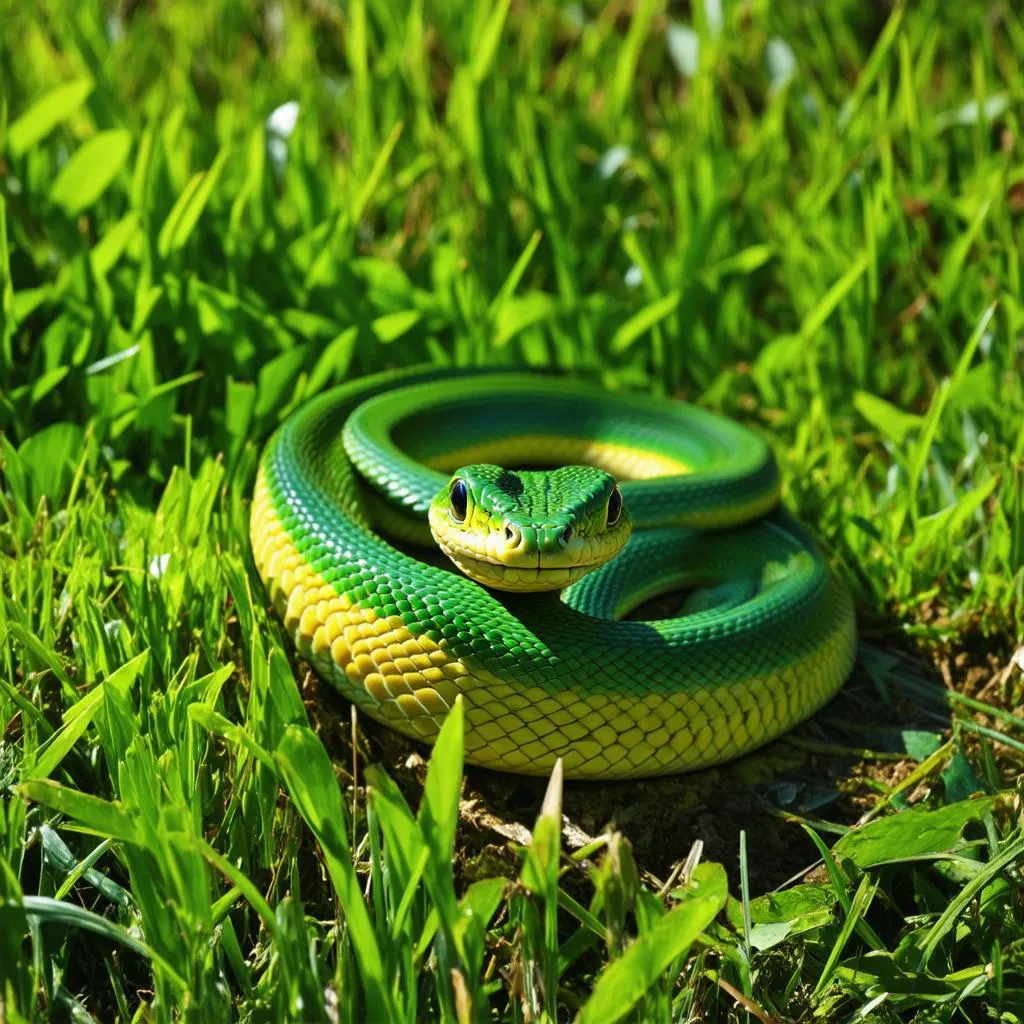Have you ever been hiking through a lush forest, perhaps the ancient redwood forests of California or the misty peaks of the Appalachian Trail, and stumbled across not one, but two snakes slithering close together? This sight might send shivers down your spine or spark a flurry of questions. Do Snakes Travel In Pairs? Is it a mating ritual, a hunting party, or simply a coincidence? Let’s delve into the fascinating world of snake behavior and uncover the truth behind this intriguing query.
Separating Myth from Reality: Snake Social Dynamics
The idea of snakes traveling in pairs is a common misconception, often fueled by folklore and a touch of human imagination. In reality, most snake species are solitary creatures, preferring to navigate the world alone except during mating season.
Why Snakes Usually Fly Solo
There are several reasons why snakes generally avoid each other outside of reproduction:
- Food Competition: Snakes are carnivorous predators, and sharing their hunting grounds with another snake means potentially losing out on a meal.
- Territoriality: Many snake species are territorial, fiercely defending their chosen domains from rivals. Encountering another snake, even of the same species, can lead to aggressive displays or even combat.
- Vulnerability: Traveling alone provides snakes with a degree of camouflage and makes them less conspicuous to predators. Moving in pairs could attract unwanted attention.
Exceptions to the Rule: When Snakes Do Congregate
While the lone wolf (or rather, lone serpent) lifestyle is the norm, there are a few notable exceptions:
- Mating Season: The urge to procreate can temporarily override a snake’s solitary nature. During mating season, males and females may travel together in search of a suitable mate. This is especially true for species like garter snakes, known for their massive mating aggregations.
- Hibernation: In colder climates, some snake species brumate (the reptilian equivalent of hibernation) together in communal dens. These dens offer protection from the elements and predators, allowing snakes to conserve energy during harsh winters.
- Maternal Care: While rare in the snake world, a few species, such as pythons, exhibit maternal care. Females coil around their eggs to provide warmth and protection until they hatch.
Do Copperheads Travel in Pairs? Exploring Specific Snake Behaviors
The question “do snakes travel in pairs” often arises from sightings of specific snake species, like copperheads. While copperheads, like most snakes, are generally solitary, they have been observed in close proximity during mating season or when sharing a particularly favorable basking spot. However, this does not necessarily imply a permanent partnership.
You can learn more about copperhead behavior and whether they travel in pairs in our dedicated article: Do Copperhead Snakes Travel in Pairs?
Planning Your Travels with Snakes in Mind
Whether you’re an avid hiker venturing into the wilderness or simply enjoying a leisurely stroll through a local park, understanding snake behavior can enhance your outdoor experience.
- Be Aware of Your Surroundings: When exploring snake habitats, pay attention to your surroundings. Avoid walking through tall grass without proper footwear, and be cautious when stepping over logs or rocks.
- Respect Their Space: If you encounter a snake, maintain a safe distance. Observe it from afar, but avoid disturbing it or attempting to handle it.
- Travel Prepared: Pack a first-aid kit and know how to identify venomous snakes in your area. Familiarize yourself with the proper protocols for snake bites.
 Snake in Grass
Snake in Grass
FAQs: Addressing Common Concerns About Snakes
- Do snakes chase humans? Snakes generally view humans as predators, not prey. They are more likely to flee than attack. However, if cornered or threatened, they may defend themselves.
- What to do if you see a snake in your yard? If you encounter a non-venomous snake in your yard, give it space and allow it to move along on its own. If it’s a venomous snake, contact animal control or a wildlife removal service.
- Are snakes a sign of bad luck? In some cultures, snakes are associated with negative connotations. However, in others, they symbolize wisdom, transformation, and healing. Ultimately, their significance is a matter of cultural interpretation.
 Traveler Hiking
Traveler Hiking
Embracing the Serpent’s Path: Finding Harmony with Nature
While the question “do snakes travel in pairs” might lead to more fascinating insights into snake behavior, it also reminds us of the intricate connections within the natural world. By understanding and respecting wildlife, we can create more harmonious and enriching travel experiences for ourselves and future generations.
For further insights into the fascinating world of snakes and other wildlife encounters on your travels, explore more informative articles on travelcar.edu.vn.